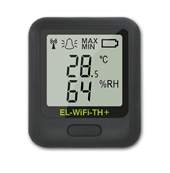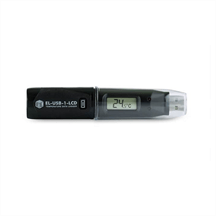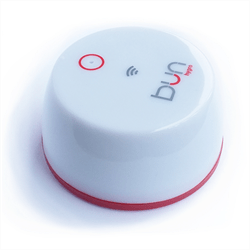The Advantage of WiFi loggers over conventional downloadable loggers!
The Advantage of WiFi loggers over conventional downloadable loggers! |
 | A data logger is an instrument which records environmental conditions over a period of time, allowing conditions to be measured, recorded, analysed and validated. A conventional data logger contains a sensor to record the environmental conditions and has an internal memory to store the data. The stored data is then transferred to a computer for analysis. | |
There are a number of advantages with using a conventional logger. In remote or dangerous locations that you don’t have access
to, a data logger can be used to monitor the environmental conditions. Once a data logger is set up, it data logs automatically
so you don’t require the presence of a person to record the data. Once logging has been completed, graphs and tables can
be generated from the data to provide a comprehensive, accurate story of the environmental conditions being monitored.
Figure 1: A conventional USB downloadable logger There are also disadvantages with using a conventional data logger. Given the data acquisition is at the end of the logging
cycle, you won’t be able to pick up any adverse events that may have occurred until after the event has passed. If there
is any fault with the data logger, it will go unnoticed until you access the data logger.
One way to overcome the disadvantages of a conventional data logger is to use a Wi-Fi data logger. A Wi-Fi data logger has
the ability to connect to a Wi-Fi signal to upload the data onto a cloud server. The data can be accessed instantaneously
either through a website or an app.
The main advantage of using a wireless data logger system is that you can analyse the data while the test is being carried out. Given the data is readily available on the cloud server, you can monitor the test and if there are any adverse events detected, you can take action as it occurs. Most cloud servers have the ability to set up email and/or SMS alerts. This is very useful for example if you are monitoring fridge temperature. You can set high and low alarms to warn you if there is a breach of temperature range so you can take immediate action. Another advantage is the data can be accessed anywhere that has internet access. This allows you to analyse the data to generate reports if you are away or provide routine checks to monitor the environmental conditions. If there is a drop in Wi-Fi signal, the data logger will store the data internally and upload the data when there is a signal or conversely can be downloaded directly to a computer. Our favourite WiFi Data Logger: The IC-BUN is a Wi-Fi logger has inbuilt sensors that measure temperature and humidity. The IC-BUN connects directly to a Wi-Fi signal to establish a connection to the cloud-based system. This allows you to set parameters like measurement intervals, upload intervals, minimum and maximum allowed temperature and humidity thresholds all through the cloud-based system. You will have the ability to access records history, graphs and periodical report remotely. If the minimum and maximum allowed temperature and humidity thresholds are breached, the server can send out email and text message alarms. Figure 2: Our Favourite Temp/RH WiFi logger, the IC-BUN If you’re still unsure about which logger is right for you, contact one of our scientists on 1300 737 871 or at
customer-service@instrumentchoice.com.au | ||
See our other newsletter articles here!
Contact our expert scientists now to get the right meter or data logger to suit your needs and discuss your project.
Phone: 1300 737 871
Email: customer-service@instrumentchoice.com.au


